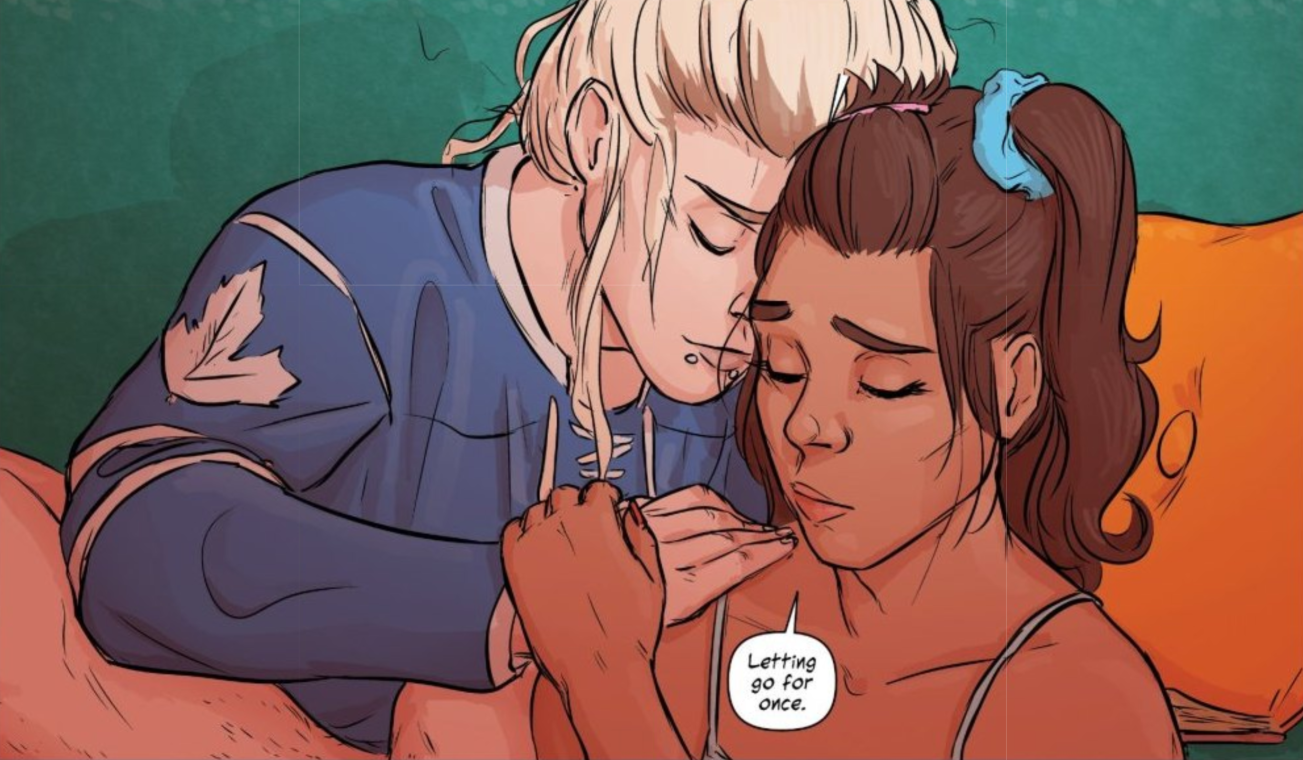Sex Death Revolution #1
Posted on November 6, 2018 by John Elrod II in Sex Death Revolution // 0 Comments
On its surface, Sex Death Revolution is a supernatural story about black magic, self-discovery, and betrayal, with a first issue that sets up a great amount of horror potential for the limited series’ remaining four issues. Beneath that surface, though-beyond the entertainment of sorcery and gossip-is a subtextual center that not only gets directly at what representative art means but lays bare just how wrong comicsgate demonstrably is about literally everything.
Sex Death Revolution comes to us from publisher Black Mask Studios (Black, Black [AF], Beautiful Canvas, Calexit). It’s written by Magdalene Visaggio (Kim & Kim, Dazzler: X Song) and serves as the second volume in what she has said is her “Death Trilogy”, following her previous series Eternity Girl. Visaggio has said she conceived of the story in the summer of 2016 and wrote the entire limited series in March 2017, so this has been a couple years in the making.
Visaggio recently made a long Twitter thread dealing with Sex Death Revolution and what it is meant to be about. The entire thread is great, and I encourage you to read it, as well as her response to the person whose opinion spurred it, but this is the quote that instantly made me want to read this book:
Yes, SDR is about my transition inasmuch as I have only experienced my own, and it’s about the weird sense of regret and frustration and even resistance we can put up when things really start changing. It’s about being conflicted about our own growth.
I love that quote because it gets to exactly what I mean about representative art. Yes, Magdalene Visaggio is a trans woman who, in this story, is writing about her transition experience through the prism of these fictional characters, and there is unbelievable value in having that story out there for other people who may be going through the exact same things she has been through. That’s the direct affect of representative art, but the indirect affect can actually reach even further, as it can reflect the lived experience of people who may not be in the exact same situation but can still relate to the events within the story.
The catch is, those people often don’t want to relate to art that isn’t directly about them. People who benefit from the status quo, people in power, people with privilege: they generally don’t want to open themselves up to empathizing with people who differ from them. Racists don’t want to relate to people of color. Sexists don’t want to relate to women. Homophobes don’t want to relate to gay people. Transphobes don’t want to relate to trans people. Islamophobes don’t want to relate to Muslims. You get the point. They want straight, white, Christian men writing stories about straight, white, Christian male characters; that’s it. No seasoning on my chicken, thanks! Just plain, white meat.
It’s sad, honestly, because you miss out on so many flowers when you choose to wall off your garden. Let’s look at Sex Death Revolution #1. Here, we are introduced to Esperanza and her girlfriend Shannon. We eventually find out the two of them were, until recently, part of a coven. The coven was filled with characters we’re sure to learn more about in coming issues, and then it suddenly broke up for questionable reasons. Now, Esperanza and Shannon are trying to figure out how to move on after such a major change in their lives. First, though, we simply meet the two of them.
I always feel silly describing scenes involving people as “human” scenes, because of course they’re “human”; they’re scenes with humans in them! But real humanity is often difficult to convey through illustration. The artwork from illustrator Becca Farrow (Ladycastle), in conjunction with colorist Harry Saxon and Visaggio’s writing, captures some lovely moments that not only make these characters feel real but also truly establish their relationship. A look, a touch, a kiss: they’re all pieces to who we are as people, and we’re given tons of that here with Esperanza and Shannon, to really let us get to know them together.
It’s not until later in this 44-page first issue that we learn Esperanza is a trans woman. That’s right, you spend all this time relating to her as a person, only to find out *gasp* she’s still a person. But that’s seriously the problem those who consider themselves “comicsgate” have with comics like this one. They don’t want to open themselves up to the potential for change that empathy creates. History is littered with examples of how social integration and shared experiences can help combat prejudice and bigotry, and that’s an objectively good thing; these guys, though, don’t seem to want to accept that. It’s almost as if they may be feeling some kind of conflict about their own growth. You know, come to think of it, I believe there’s a comic book series that happens to be about dealing with just that very thing. Maybe they should read it.
Sex Death Revolution #1 Review Score
-
Plot – 9/109/10
-
Dialogue – 9/109/10
-
Art – 9.5/109.5/10
-
Cover – 9/109/10
Sex Death Revolution #1 (of 5)
Writer: Magdalene Visaggio | Illustrator: Becca Farrow | Colorist: Harry Saxon | Letterer: Zakk Saam | Designer: Tim Daniel | Editor: Hannah Means-Shannon | Covers: Kiki Jenkins | Publisher: Matt Pizzolo/Black Mask



